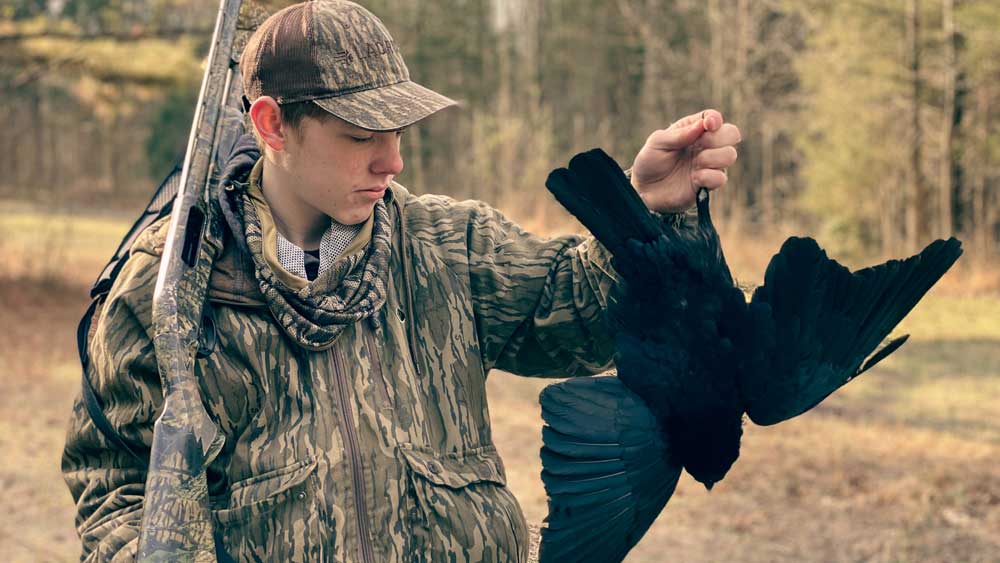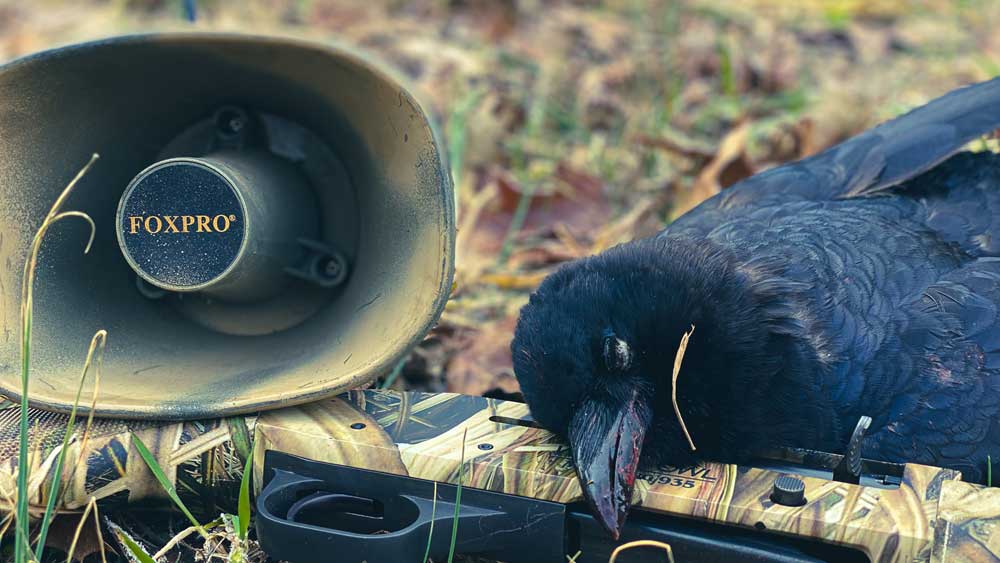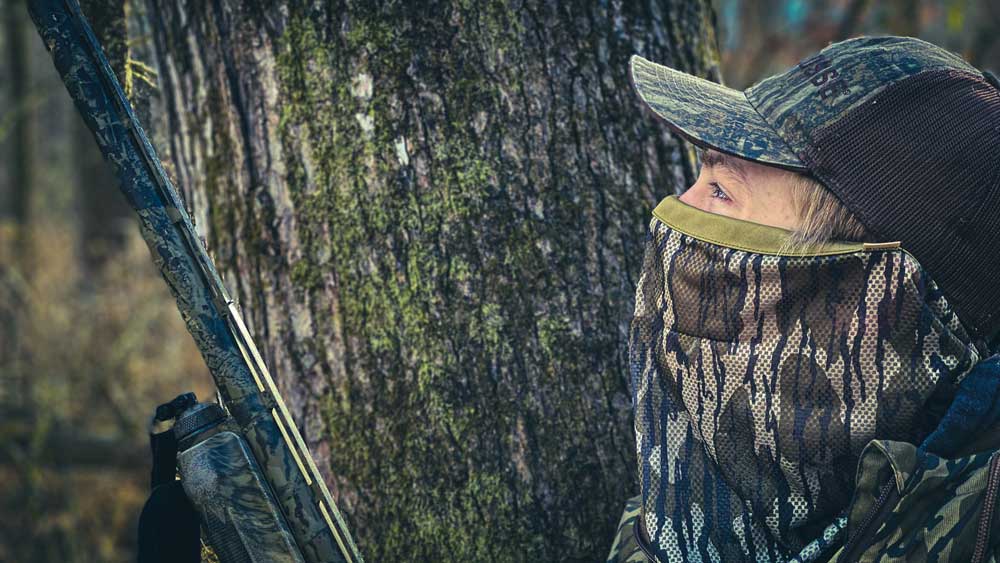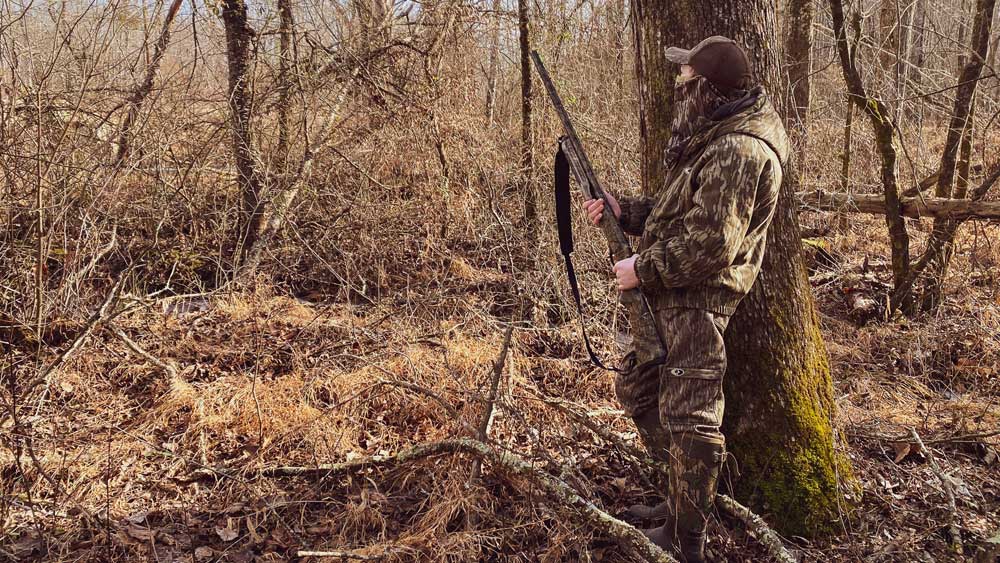Brodie Swisher
Duck season is a wrap. For some, it’s been a season full of heavy straps and smokin’ gun barrels, and for others the ducks were few and far between. Regardless of which side you were on, you can probably handle some more shotgunning action at this point in the year. That’s why crow hunting provides the perfect solution to help you scratch the off-season itch. Here’s a look at what you need to know about hunting crows on the winter migration.

The Crow Migration
Despite what some may think, crows migrate. Sure, there are local family groups of crows that you’ll see throughout the summer months. But consider the boost in numbers that you encounter as the cold temperatures set in. Crows demonstrate what is known as “partial migration” where some individuals within a population migrate and some don’t.
A team from Hamilton College captured crows in California and New York and fitted them with satellite transmitters to track their movements. Their data showed that 73% of western crows and 86% of eastern crows migrated at least some distance to breed, with an average journey of 500 kilometers. The study also indicated that the birds were faithful to return to the same breeding grounds each year.
Why is this important?
Like with waterfowl, having fresh crow birds in the area means new opportunities. Crows are among the smartest of birds to fly the skies. They have incredible memories, making them easy to educate when it comes to hunting pressure. Your local birds will quickly figure out your calling routine and avoid you at all cost. That’s why hunting the winter crow migration ups your odds for calling fresh crows to your setup. You’ll experience a steady supply of new birds at this time of the year that’ll help tip the odds for calling success in your favor.

The Roost Tree Boom
As mentioned above, you’ll see a boom in crow numbers when migrating crows move south. You’ll notice roost trees go from small family groups to hundreds, and even thousands, of birds. Steve Turpin, of Turpin Custom Game Calls, has chased crows all across the country. He’s a champion crow hunter and has even bagged a double-banded crow. He’s been around the block when it comes to killing crows in big numbers. Turpin learned to focus on roost sites when it comes to chasing migrating crows.
“When new birds arrive, you’ll see a boom in roost areas,” says Turpin. “We’ve come across roosting areas during the migration that held thousands upon thousands of birds. And that’s when you know you’re in for a great hunt. Find the roost trees, and then you’ll know how to make your next move along the flight path.”
Tom Turpin: Hall of Fame Duck Call Maker
Finding the Flight Path

Scouting will help you discover a roost site, but the next step will be to locate the flight path when the birds come off the roost. Scouting is important here as well. You don’t want to set up where they are, at the roost. You want to set up along their flight path to food.
“Don’t ever hunt your actual roost,” says Turpin. “You’ll burn them up, and they won’t come back. You want them coming back to that roost site day after day, and they will, if you set up to hunt along the flight route and not at the roost tree.”
The beauty of crow hunting is that you can call the birds to your setup. You may not have access to the roost tree, and that’s okay. You simply need to secure access permission on a piece of property a half-mile from the roost, along the flight path. Use a hunting map app, like OnX Hunt to identify landowners, gain permission, and drop pins for potential ambush sites along the flight route.
Concealment is Critical

Crows have some of the best eyes of any animal you’ll hunt all year. They’ll pick you out as quickly as they arrive on the scene if you’re not adequately concealed. And when it comes to hunting crows on the migration, you’ll be hunting timber without foliage. You’ll have to take extra precaution to stay concealed at this time of year when the leaves are off.
You must break up your human outline. Standing out among thin brush and briars won’t cut it. Cedar trees offer great cover throughout the winter months, however they can be restricting when it comes to swinging a shotgun barrel at approaching birds. Tuck into the shadows. Lean against a large tree to break up your outline. Wear the camo that helps you blend into the landscape. It’s hard to beat the Bottomland pattern when it comes to leaning against a tree as you wait out approaching crows.
Wrapping Up
So when you start to feel the off-season itch, give crow hunting a try for more time on the trigger. Hunting crows on the winter migration will ensure more birds in your area than at any other time of year. Find the roost, secure an ambush point along the flight path, and blend into the landscape to enjoy some of the most exciting and abundant shotgunning opportunities of the year.































